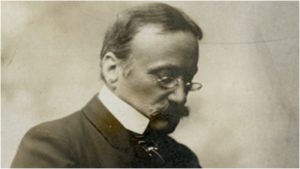
The Major Librettos of Arrigo Boito
By David SalazarArrigo Boito, born on Feb. 24, 1842, has marked his space in the opera world mainly through his opera “Mefistofele.”
He didn’t get a chance to create much other music, his final work, “Nerone,” never coming to full fruition. But he did leave his mark in other major ways. Here is a look at his most famous works, outside of his own opera.
Two Verdi Masterpieces
It isn’t much of a secret that “Otello” and “Falstaff” owe as much of their respective greatness to Boito as they do to Verdi. First off, they would never exist without Boito’s insistence, as Verdi had already retired and refused to return for “Otello.” Secondly, “Falstaff” is exquisite in its use of language and interplay to comedic effect. “Otello” is stripped down and Boito famously preserved the power of the third act after Verdi wanted a far more bombastic, and less effective ending.
Another Verdi
Before the composer allowed Boito to get a chance at “Otello” with him, he tested Boito on “Simon Boccanegra.” Boito was a major factor in the opera’s success today, changing out the famous government scene and writing in a new one that is arguably the finest moment in the entire opera. And because Verdi and Boito worked rather well on this revision, they took it to the next level with the composer’s finest dramatic works.
La Gioconda
Using the guise of Tobia Gorrio, the composer created Ponchielli’s famous opera. It isn’t the most dramatically plausible of works, but it certainly suits the style that the composer was looking for and has stayed within the confines of the repertoire for much time.
Amleto
There aren’t any really satisfactory adaptations of Shakespeare’s greatest play, but Faccio comes closest. Unlike other versions, where the play is heavily altered to suit a specific style (see Thomas’ adaptation), Faccio and Boito keep it close to the original work. It isn’t a perfect adaptation but it is Shakespeare and it is effective.


